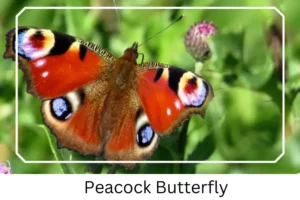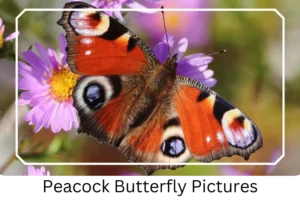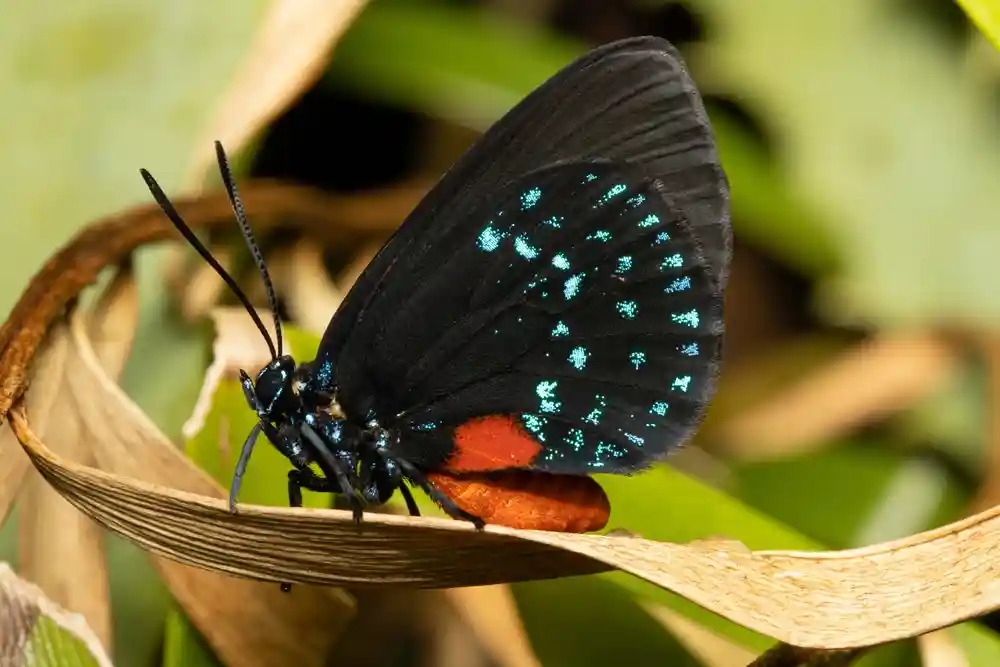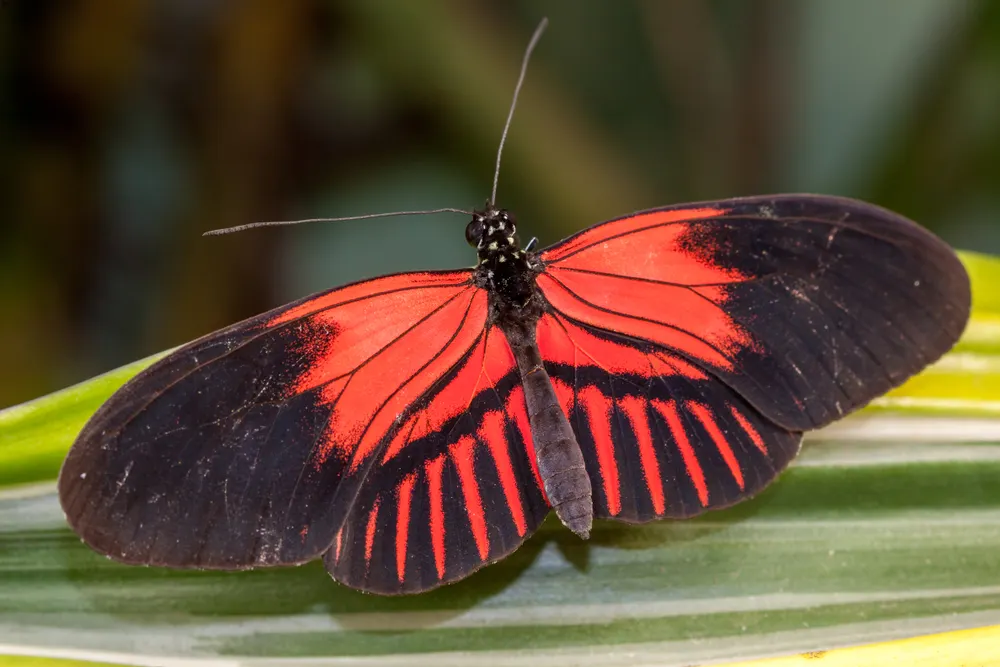Peacock (Aglais io)
The Peacock Butterfly (Aglais io) is a magnificent species known for its vibrant colors and intricate patterns. This butterfly, resembling the luxurious tail of its namesake bird, thrives across various regions, showcasing its beauty in parks, meadows, and gardens. With its presence spanning from Europe to the temperate zones of Asia, the Peacock Butterfly plays a crucial role in local ecosystems, pollinating plants while gracing the environment with its dazzling appearance.
Scientific Classification
- Family: Nymphalidae
- Genus: Aglais
- Common names: European peacock
- Scientific Name: Aglais io
Overview
This species is distinguished by its two local subspecies, Aglais io caucasica and Aglais io geisha, each adapted to specific geographical areas. Emerging from hibernation around February, these butterflies are a signal of the coming spring. Their lifecycle, from larva to adult, is a fascinating journey of transformation, showcasing nature’s marvels through each stage of development.
Description and Identification
Caterpillar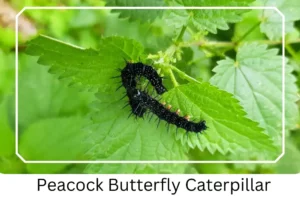
The Peacock Butterfly caterpillar is an impressive sight, with a glossy black body adorned with bristly spikes arranged in rows. These spikes, dotted along the caterpillar’s length, serve as a deterrent to predators while it feeds on its host plants. Growing up to 1.65 inches, the caterpillar’s appetite is voracious, allowing for rapid growth before entering the pupal stage.
Pupa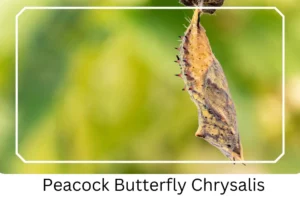
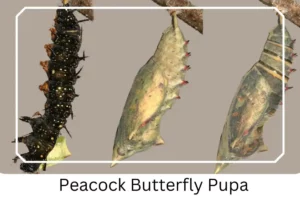
The chrysalis stage of the Peacock Butterfly is as intriguing as it is protective. Its pale green color and angular depressions mimic the appearance of a leaf, blending seamlessly into its surroundings. This camouflage is vital for survival, shielding the pupa from predators as it undergoes its transformation.
Adult Butterfly
Upon reaching adulthood, the Peacock Butterfly displays sexual dimorphism, with females slightly larger than males. The wings’ rust-red base is adorned with spectacular eyespots, mimicking the gaze of predators to deter threats. These eyespots, especially vibrant when the wings are spread, contribute to the butterfly’s distinctive appearance. The underside of the wings, however, is dark, allowing the butterfly to hide among foliage.
Sexual Dimorphism: Females are marginally larger than males.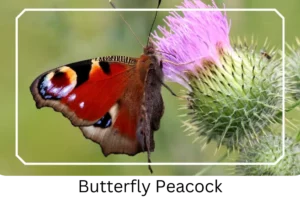
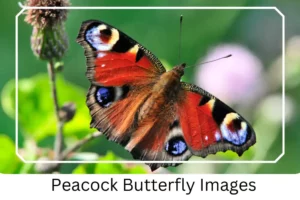
Color and Appearance: The primary rust-red color of the wings is complemented by yellow, black, and blue eyespots, creating a mesmerizing display.
Average Wingspan: Ranges from 2.17 inches in males to 2.36 inches in females.
Flight Pattern: The butterfly’s flight is both quick and graceful, with a gliding motion that adds to its ethereal presence.
Eggs
The eggs of the Peacock Butterfly are laid in large batches, their pale green to yellowish hue and rounded shape with ridges making them distinctive. These eggs are the beginning of the lifecycle, leading to the next generation of these stunning butterflies.
Quick Facts | |
| Distribution | Europe and temperate Asia, extending to Japan. |
| Habitat | Prefers parks, fields, gardens, meadows, and wooded areas up to 8,200 ft in elevation. |
| Lifespan of Adults | Approximately 11 months. |
| Breeding Season | Typically begins in February. |
| Host Plants | Stinging nettle, hop, and small nettle are primary food sources for caterpillars. |
| Adult Diet | Nectar from various flowers and occasionally rotten fruits or tree sap. |
How to Identify Peacock Butterfly?
Identifying a Peacock Butterfly is a delightful challenge for nature enthusiasts. The most striking feature is the eyespots on its wings, designed to mimic the eyes of predators and protect the butterfly from attacks. These spots are most vibrant and visible when the butterfly’s wings are fully spread, displaying a kaleidoscope of colors that include rust-red, yellow, black, and blue. The shape of the wings and the unique pattern of eyespots are key identifiers, distinguishing the Peacock Butterfly from other species. Additionally, the dark underside of its wings helps it blend into the environment when at rest, making it a master of camouflage. Observing these characteristics, along with the butterfly’s habitat, behavior, and flight pattern, can help accurately identify this species in the wild.
Did You Know?
- The eyespots on the Peacock Butterfly’s wings don’t just deter predators; from above, they resemble an owl’s face, providing an additional layer of protection.
- After the breeding season, males become highly territorial, showcasing a fascinating aspect of their behavior by chasing away not only potential rivals but also females.
- The Peacock Butterfly is named after Io, a priestess of Hera in Greek mythology, adding a touch of mythological allure to its scientific identity.
- These butterflies are capable of hibernation, allowing them to survive the cold winter months and reemerge with the warmth of spring.
Conclusion
The Peacock Butterfly is not just a testament to the beauty of nature but also a symbol of resilience and adaptation. From its early days as a caterpillar to its breathtaking flight as an adult, this species captures the imagination and admiration of all who encounter it. By understanding and appreciating the Peacock Butterfly, we gain insight into the complex web of life and the importance of preserving the natural world for future generations to enjoy.
Peacock Butterfly Pictures
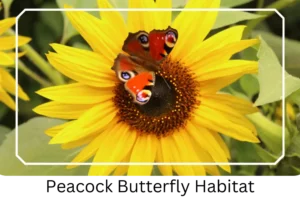
Peacock Butterfly Habitat

Scientific Classification

- Family: Nymphalidae
- Genus: Aglais
- Common names: European peacock
- Scientific Name: Aglais io

